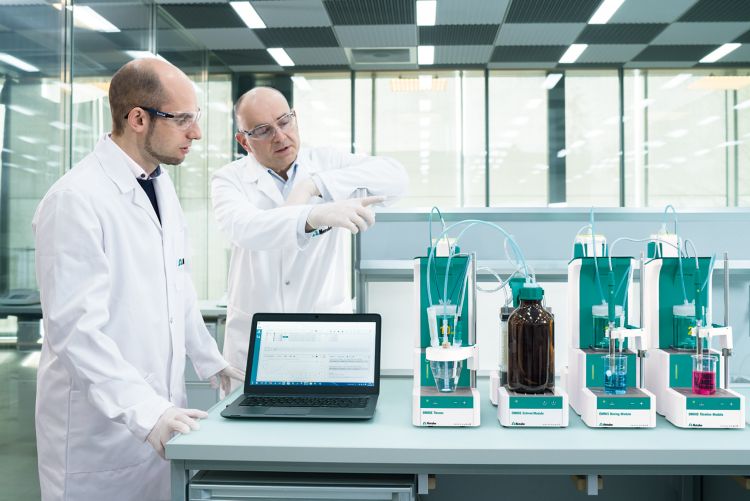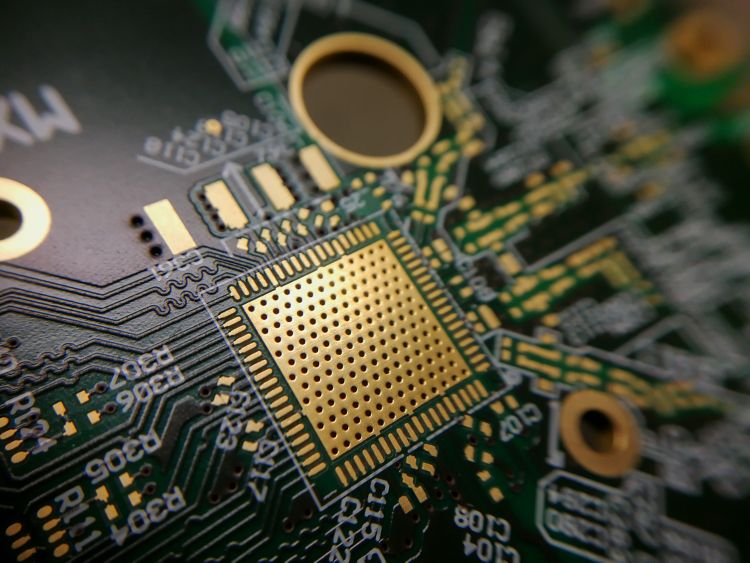Laboratory vs. process analysis: Key factors for informed decision-making
Jan 29, 2024
Article
Every day, managers in the industrial world face countless difficult questions and must make critical decisions. One of these questions is whether analytical instruments should be placed online/inline (directly in the process) or offline (e.g., in a laboratory facility) for process monitoring and quality control purposes. As knowledge is power, having all of the relevant information is important for managers to make smart decisions based on their individual process circumstances. Ultimately, every process is different and requires customized analytical solutions – which is what Metrohm offers. This blog article discusses the most important factors that plant managers should consider before deciding to implement an online/inline instrument, or whether to use an offline laboratory instrument.
Click on a link below to jump directly to a specific topic:
Data traceability and communication
Plant managers and operators need to stay up-to-date about their processes at all times. It can be quite challenging to handle several different measurement techniques across a production plant or analyze cumulative trends of data coming from multiple sources.

Data from process analyzers
Process analyzers can store, evaluate, and use analysis data intelligently to take immediate action based on defined process requirements. Metrohm process analyzers can be used to help control and optimize a process by means of direct feedback of the results to the DCS/PLC/SCADA for various purposes (e.g., correct dosage of chemicals). The fully integrated IMPACT software is responsible for data collection. When necessary, it triggers warning signals and alarms for corrective actions to be taken immediately.
Data from laboratory instruments
Communicating the most current data to plant control rooms is not as straightforward when using laboratory instruments. To achieve this, the facility would have to invest in multiple software integration platforms. Not only does this result in additional costs, it can also be a difficult task to fulfill all the necessary requirements and gain approval from all stakeholders.
If the process is relatively simple and stable with minor fluctuations, then infrequent analysis is sufficient with results typically used for monitoring trends. In this case, sending data directly to the control room is not strictly necessary. A laboratory instrument could be the right choice. It provides the same measurement accuracy as a process analyzer, but with the added advantage that one instrument can run many of these less critical analyses for a faster return on investment (ROI).
Read more about the benefits of process automation in our previous blog post.
Analysis frequency
Before deciding on and purchasing analytical instrumentation, plant managers and process operators should consider how often they need to make process measurements for better control.
More often
Multiple analyses that require sample pretreatment may be needed per shift or per day. In this case, an online or inline instrument with a sample preconditioning panel is the most ideal solution.
Real-time results give the quickest feedback for automatic, continuous process control without costly delays. A high analysis frequency gives a more detailed view of the current process conditions, thereby reducing the chances of delivering out-of-specification products or unscheduled downtimes (Figure 1).


Moreover, online process analyzers can be programmed to use intelligent conditional actions based on «if» statements, revolutionizing process control. By continuously monitoring critical parameters in real time, they enable process operators to make more informed decisions when it matters most. When the monitored process remains within specified control limits, the process analyzer automatically reduces the frequency of sampling, thereby optimizing efficiency and reducing running costs.
Concurrently, as the process approaches critical control limits, the process analyzer reacts swiftly by automatically increasing the analysis frequency to capture even more data. This enables early detection warnings, prompting immediate corrective measures to be taken before the situation has a chance to escalate.
With the ability to adapt to varying process conditions, online process analyzers enhance productivity, minimize defects and waste (i.e., reduce costs), and guarantee the utmost precision in maintaining process stability.
Furthermore, process analyzers from Metrohm have been designed to store results in an encrypted database. All collected data are fully traceable, preventing data tampering. A power buffer and a controlled shutdown sequence prevent data corruption. The operating system is embedded, blocking user access for added protection.
Benefit from using online/inline process analysis:
- More accurate view of actual process conditions by representative sampling
- Reduce mistakes due to human error
- Less product waste because of quick response times
- Prevent reprocessing
Less often
On the other hand, if certain parameters need to be measured once per production shift or day or even less frequently, using a laboratory instrument makes more sense for quality control purposes. However, pay attention to the overall process conditions and environment. Manual sampling has a much slower turnaround that requires transporting the sample to a nearby lab for storage and eventual testing. This time delay means the captured sample no longer reflects the current process conditions in regards to pH, temperature, and moisture content.
Samples are taken much less frequently for offline laboratory analysis than online/inline analysis, making it much more likely to overcompensate chemical treatments and replenishments.
Offline laboratory analysis, while not without its challenges, still offers valuable insights into the process. It is true that manual sampling might introduce some errors, but these can often be mitigated by following careful protocols and using well-trained analysts. Additionally, the overall lower analysis frequency in offline settings provides enough time for meticulous examination, leading to thorough and comprehensive results.
The bottom line
Online and inline process analyzers have their advantages, particularly in terms of providing real-time data and consistency between measurements. Nonetheless, when properly executed and managed, laboratory analyses can still provide reliable and valuable information that aids industrial process control and optimization.
Safety
Contact with hazardous chemicals is dangerous and should be minimized. In unsafe areas of the plant, it is best to prevent exposure and avoid human intervention as much as possible. In this case, offline analytical solutions are clearly not preferred.

By using an online or inline process analyzer in such situations, manual handling steps are limited and the risk of exposure to hazardous chemicals is reduced. Furthermore, sampling can be carried out on a timed basis and can be programmed to occur more frequently than is possible with manual methods. This allows much greater process control with an online or inline process analyzer.
- Avoid personnel exposure to hazardous chemicals when sampling and during laboratory analysis
- Benefit from early detection of dangerous sample composition
- Analysis possible in explosive zones with Ex-proof process analyzer
Read more about our explosion-proof process solutions here.

Where the analysis occurs can have a significant impact on the choice of instrument. For example, to verify the identity of incoming raw materials, laboratory instruments were once the obvious choice. However, given the workload and lead time, greater efficiency can be gained by utilizing easy-to-use handheld spectroscopic devices, such as a Metrohm Instant Raman Analyzer (MIRA, Figure 2).
These handheld instruments can directly determine the identity and quality of a substance at the point of receipt (e.g., at the warehouse receiving dock) and in its original transport vessel, such as a bottle, bag, or other container type. Therefore, the process is not disturbed.
For the measurement of quality control parameters at multiple process locations in a facility, online/inline analyzers are the preferred solution. The cost per analysis is lower, resulting in a faster ROI. Without using automated process analysis solutions, more laboratory analysts and instruments would be necessary. Finding well-educated and trained lab technicians can be challenging and costly as well.
Read more about our handheld analysis solutions here.
Implementation
In the section about safety, the importance of using process analyzers in hazardous areas was discussed. This section covers the physical space constraints that can be encountered at a production facility and how they can be addressed when sampling must occur.
Sometimes industrial plants have very limited space available to install an automated analysis system. Thus, offline solutions are sometimes preferred in these situations as this allows for a wider range of workstation layouts.
Metrohm Process Analytics offers remote cabinets to solve this challenge. Thanks to the flexibility of the 2060 platform, the analysis cabinet can be mounted close to the sampling point while the human interface can be installed at a location where more space is available (Figure 3).

The distance between a process analyzer and the sample point(s) can be significant. With the 2060 The NIR Analyzer for example, up to five sample points per near-infrared (NIR) cabinet can monitored at locations hundreds of meters away from the analyzer. This setup can seamlessly link the sample point(s) to the instrument through the utilization of low-dispersion optical fibers.
Inline sensors are also independent of space constraints. For example, ProTrode pH sensors can be mounted directly in pipes, reactors, or tanks. The integrated VarioPin sensor connector guarantees reliable signal transmission from the sensor to a 2060 Process Analyzer or to a transmitter located elsewhere in the facility.
Read more about the benefits of using inline pH sensors in our previous blog post.
Conclusion
It is evident that both online/inline and offline technologies play crucial roles in the industrial world—each with its own advantages, depending on the situation. The decision of whether to implement one over the other depends on the specific needs and circumstances of each plant.
Laboratory instruments are not better than process analyzers, and vice versa. Each use case is unique. Whichever choice you make, Metrohm offers the right solution to solve your challenges, whether in the laboratory or directly in the process.
 Share via email
Share via email













